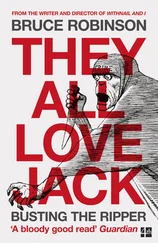Bruce Hood - The Self Illusion
Здесь есть возможность читать онлайн «Bruce Hood - The Self Illusion» весь текст электронной книги совершенно бесплатно (целиком полную версию без сокращений). В некоторых случаях можно слушать аудио, скачать через торрент в формате fb2 и присутствует краткое содержание. ISBN: , Издательство: Constable & Robinson, Жанр: Старинная литература, на английском языке. Описание произведения, (предисловие) а так же отзывы посетителей доступны на портале библиотеки ЛибКат.
- Название:The Self Illusion
- Автор:
- Издательство:Constable & Robinson
- Жанр:
- Год:неизвестен
- ISBN:9781780331379
- Рейтинг книги:5 / 5. Голосов: 1
-
Избранное:Добавить в избранное
- Отзывы:
-
Ваша оценка:
- 100
- 1
- 2
- 3
- 4
- 5
The Self Illusion: краткое содержание, описание и аннотация
Предлагаем к чтению аннотацию, описание, краткое содержание или предисловие (зависит от того, что написал сам автор книги «The Self Illusion»). Если вы не нашли необходимую информацию о книге — напишите в комментариях, мы постараемся отыскать её.
The Self Illusion — читать онлайн бесплатно полную книгу (весь текст) целиком
Ниже представлен текст книги, разбитый по страницам. Система сохранения места последней прочитанной страницы, позволяет с удобством читать онлайн бесплатно книгу «The Self Illusion», без необходимости каждый раз заново искать на чём Вы остановились. Поставьте закладку, и сможете в любой момент перейти на страницу, на которой закончили чтение.
Интервал:
Закладка:
Figure 12: The real Dave Barmy and Laura Skye
When the world discovered that a couple was divorcing on the grounds of make-believe unreasonable behaviour, the press flocked to Newquay. However, in what can only be described as reality imitating art, imitating reality, the Cornish couple initially declined to give interviews and would not answer the door. Then something very odd happened. Two enterprising journalists from the South West News hit on the bright idea of going into Second Life to secure an interview. From their offices miles away in Bristol, Jo Pickering and Paul Adcock created virtual ace reporters ‘Meggy Paulse’ and ‘Jashly Gothley’ to seek out Dave Barmy and Laura Skye for an interview.
Jo still works on South West News and she told me that she had the idea after speaking to a colleague who had been using avatars to attend online courses. As Meggy Paulse, Jo found Laura Skye in Second Life. She told me that the online Laura Skye was much more approachable and confident than the real life Amy. Eventually Meggy Paulse persuaded Amy to logoff and go downstairs and open the door to speak to the reporters camped on her doorstep. They eventually got their story.
Jo explained that Amy had felt that the betrayal online was far worse than betrayal in real life, because both she and David had created these perfect selves and still that was not good enough. In real life, we are all flawed and often put up with each other’s weaknesses, but in Second Life there were supposed to be no weaknesses. That’s why the online betrayal hurt. As Jo says, ‘She had created this perfect version of herself – and even that wasn’t good enough for him.’
I asked Jo about what ever happened to the couple. Apparently Dave did eventually meet up with Linda Brinkley, but reality must have kicked in when it came to having a real marriage when you are both poor and live on different continents. When online Dave Barmy met online Modesty McDonnell for real, David Pollard and Linda Brinkley got real. What this morality tale tells us is that the boundaries between reality and fantasy can sometimes become blurred. Paul Bloom, tells of a research assistant who was asked by her professor to do some research on these virtual communities. 42Apparently, the young woman never came back. Like some electronic cult, she preferred life in a virtual world compared to the real one. If the urge to live a life online is so compelling, it does make you wonder what the future holds. Surely something has to give, as one cannot be in two places at the same time even between virtual and real worlds. Both require the limited resource of time and that is something that cannot be easily divided.
When Online Behaviour is Off
Some individuals in power seek out sexual gratification by engaging in risky encounters. They step over the boundaries of decent behaviour. The Web has made this type of transgression all too easy. With what must be the most unfortunate of surnames, Republican Congressman Anthony Weiner found himself at the centre of a career-destroying scandal in 2011 when he was forced to resign after confessing to sending pictures of his penis to women whom he followed on Twitter. 43‘Weinergate’, as it became known, was just another example of high-profile men using the Web to send naked images of themselves to women. In the past, men exposed themselves for sexual gratification in public places but, with the advent of social networking sites, offline flashing has moved online and is much more common.
Indeed, some argue that one of the main uses of the Internet is for sex. A 2008 survey of more than 1,280 teenagers (13–20 years) and young adults (20–26 years) revealed that one in five teenagers and one in three young adults had sent nude or semi-nude photographs of themselves over the internet. 44One online dating site, Friendfinder.com, estimates that nearly half of its subscribers are married. Either they are looking for new partners or the opportunity to flirt. 45Probably one of the most remarkable cases was US Army Colonel Kassem Saleh, who had simultaneously wooed over fifty women online and made marriage proposals to many of them despite the fact that he was already married.
‘Sexting’ is a relatively new phenomenon in which individuals use technology to engage in sexual activities at a distance. Susan Lipkins, a psychologist from Port Washington, New York, reports that in her online survey of thirteen to seventy-two-year-olds, two-thirds of the sample had sent sexually explicit messages. The peak activity was in the late teenagers and young adults. What was interesting was that this behaviour was associated with personality measures of power such as assertiveness, dominance and aggression in those over the age of twenty-seven. Power was not a factor in the younger group but was significantly related to sexting in the older men. 46The ease and speed of the Web, as well as the perceived dissociation and distance from reality, lead to an escalation of brazen activity. This can easily slide into moral indiscretions that are unregulated by social norms compared to real life. Just like bullying, the apparent anonymity, distance and remoteness of being online allows us to not be our self as we would behave in the real world.
The Cyber Rape by Mr Bungle the Clown
When it comes to the boundaries between reality and fantasy and between moral and immoral acts, probably the most poignant tale that reveals the blurring in these situations is the story of Mr Bungle the Clown. Mr Bungle was a cyber character who inhabited the virtual world of LamdaMOO – one of the first online communities back in the early 1990s where multiple players create and control virtual characters. Mr Bungle was a particularly nasty piece of work. In one notorious event one evening in a virtual room in a virtual mansion, he violated members of his fellow online community using software subroutines (sections of code designed for a particular task in computer programming) to make the other characters perform perverted sexual acts. 47
Of course, this terrifying vision of Mr Bungle was all in the users’ mind. He didn’t really exist. If you logged on to LamdaMOO back in these early days of virtual communities, you simply accessed a database stored somewhere inside a Xerox Corporation research computer in Silicon Valley that presented the user with scrolling lines of description. The environment, objects and all the characters were just subroutines of text – fairly basic stuff compared to the rich visual environments that are expected in today’s technologically advanced online communities. LamdaMOO was nothing compared to the graphical 3D visual worlds of Second Life or World of Warcraft, but then human imagination doesn’t require very much to generate a vivid impression.
Mr Bungle was the disturbed creation of a young hacker logging on from New York University who had managed to hack the system’s software to produce a subroutine that presented other users with unsolicited text. During the event in question, several female users were online when they were presented with text describing how their characters inserted various utensils and derived sexual pleasure as Mr Bungle watched, laughing sadistically. Again it was all in the mind as the whole attack was played out as a series of scrolling text.
Afterwards, one female user from Seattle whose character, called ‘Legba’, had been virtually abused, publicly posted her assault on the LambdaMOO’s community chatboard and called for Mr Bungle’s castration. Months later she told the reporter who had first covered the story that as she wrote those words, ‘post-traumatic tears were streaming down her face’. Clearly this was no longer a virtual incident in her mind – as a victim she had taken it to heart. The assault had crossed the boundary of imagination to affect the real-life emotions of those concerned.
Читать дальшеИнтервал:
Закладка:
Похожие книги на «The Self Illusion»
Представляем Вашему вниманию похожие книги на «The Self Illusion» списком для выбора. Мы отобрали схожую по названию и смыслу литературу в надежде предоставить читателям больше вариантов отыскать новые, интересные, ещё непрочитанные произведения.
Обсуждение, отзывы о книге «The Self Illusion» и просто собственные мнения читателей. Оставьте ваши комментарии, напишите, что Вы думаете о произведении, его смысле или главных героях. Укажите что конкретно понравилось, а что нет, и почему Вы так считаете.












